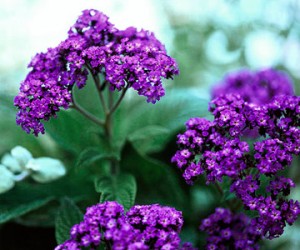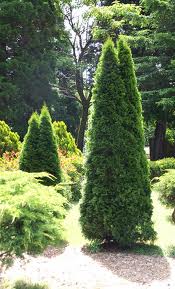





You can only have so many plants, so make them all multi-purpose, and choose only the best. Don’t have an annual when you can have a similar perennial. Don’t choose a plant for its flowers if you can have another with flowers as good and scent, and better still with some part you can eat or use in cooking, or just with attractive foliage. If you are interested solely in beauty, not production, you can still choose plants which benefit wildlife.
 Plants are the most important part of our garden and deserve a little understanding. If we choose them carefully they will serve us well. Good gardeners try to go with nature rather than force her. Since plants respond directly to what we do for them, we can help them flourish if we understand their needs and responses. Plants can be better understood if we divide them up into groups so that we can give each the best treatment according to its nature.
Plants are the most important part of our garden and deserve a little understanding. If we choose them carefully they will serve us well. Good gardeners try to go with nature rather than force her. Since plants respond directly to what we do for them, we can help them flourish if we understand their needs and responses. Plants can be better understood if we divide them up into groups so that we can give each the best treatment according to its nature.
All plants have a two-word Latin name, giving their genus and species. Often there is a third word, giving more description; this may be the cultivar name it is commonly known by. So we get names that seem complicated but which contain information to help us comprehend each plant. For example Viburnum opulus ‘sterile’ Snowball’ is one of the Viburnum genus from the Caprifoliaceae family of plants. Opulus defines it as the particular species usually known as the guelder rose. This cultivar happens to be sterile, so is non-berrying, and ‘Snowball’ is a ‘commercial’ clone name for this vegetatively propagated variety. Most species in a genus resemble each other with only minor differences, so once we know one we can often — but not always — guess at the needs and attributes of the others. For example, clematis and jasmine are both thought of as climbers and the needs for most varieties and species are similar, varying most in pruning, but there are herbaceous and shrubby clematis and even an evergreen shrubby jasmine, J. revolutum.
The important thing to remember about family ties is that closely related plants, those with the same first name, usually will suffer from the same pests and diseases. Furthermore, the more widely and commonly any of them and their relations are grown, the more pests and diseases there are to plague them. For example: members of the Brassica family — cabbages, cauliflowers, broccoli, etc — are all both common and closely related, so they are attacked by the same large number of pests and diseases; the same applies to roses, whereas spinach and peonies are not grown as widely or frequently, so are less troubled. Any garden plants that are related to common native plants will similarly be subject to their pests and diseases, but these will usually be controlled by natural systems that have evolved with them, provided we have not inadvertently destroyed them.
Annuals live, flower and die in a short period, usually from spring to autumn. They are some of the prettiest flowers and their rapid growth is useful for filling gaps. Many vegetables whose fruits or seeds we eat, such as sweet corn, peas and broad beans, are also annuals. However, to complicate things, many perennials are grown as annuals and either discarded or killed by the frosts to be replaced with fresh plants the following year. Annuals generally prefer to be sown where they are to flower and resent root disturbance; most are normally propagated by seed.
Biennials live longer, growing one year to flower the next. Many vegetables such as the roots and onions are biennials, but eaten before they complete their cycle. Some of our most attractive flowers are biennials, using the energy stored in their roots to throw up long spikes: Canterbury bells, honesty and sweet rocket are all examples. Some biennial plants, especially wallflowers, hollyhocks, stocks and sweet William, might live for another year or two before dying away, but they are usually replaced with fresh plants. Moving biennials while they are dormant will not harm them.
True perennials last for more than a year or two and although some live not much longer than that and some apparent perennials are monocarpic, dying once they have set seed, most are much longer lasting. Those that spread with creeping roots are continually forming new plants at the margins and are effectively immortal; some trees live more than a thousand years. Perennials tend to make up the bulk of the ornamental and fruiting plants in most gardens. They are semi-permanent, not needing annual replacement, and their established root systems help them endure poor conditions. Most can be moved when young, but resent it increasingly as they grow older and larger, often it is easier to propagate and plant a new perennial rather than to move an old one.
You can also tell a lot about the requirements of a plant from its appearance.
Perennials can be split into two groups: those with soft growth that dies back in winter and those with shrubby or woody growth that endures and regrows each year. The former, bulbs and herbaceous plants, spring again from the roots and are mostly propagated by division or root cuttings. Some also come true from seed and in a fairly short time. Bulbs and herbaceous plants form larger clumps, but do not grow taller each year and thus need no pruning, only a tidy up in autumn.
Woody and shrubby plants grow larger each year and may need pruning if you want to control their size. They are mostly propagated from cuttings or layering, though some need to be grafted or budded on to suitable rootstocks. Shrubby perennials grown from seed may be variable and slow to flower or fruit.
While herbaceous plants overwinter protected by the soil, most woody plants drop their leaves in autumn and go partially dormant to protect them from the hard weather. This is generally a good time to prune or move a plant, as it will recover much better than if it is moved while in leaf. Although a plant may appear totally dormant, some processes continue and unless the soil is frozen they start rooting immediately.
 Evergreens retain their foliage throughout the year, dropping their leaves only a few at a time. In hard weather they can suffer badly from drying winds and frozen soil. The moisture sucked out of their leaves cannot be replaced, leading to scorched foliage or even death. Evergreens have evolved waxy coatings to their leaves to prevent water loss and this is partly why the leaves are slow to break down and hard to compost. The dense cover they provide makes excellent winter shelter for ladybirds and other predators big and small, so include some in different parts of the garden as refuges. Most evergreens are never dormant, so should be pruned or moved only in early spring once the soil has warmed enough for them to recover quickly.
Evergreens retain their foliage throughout the year, dropping their leaves only a few at a time. In hard weather they can suffer badly from drying winds and frozen soil. The moisture sucked out of their leaves cannot be replaced, leading to scorched foliage or even death. Evergreens have evolved waxy coatings to their leaves to prevent water loss and this is partly why the leaves are slow to break down and hard to compost. The dense cover they provide makes excellent winter shelter for ladybirds and other predators big and small, so include some in different parts of the garden as refuges. Most evergreens are never dormant, so should be pruned or moved only in early spring once the soil has warmed enough for them to recover quickly.
Plants that will stand in the open garden and survive several degrees of frost are considered hardy. Half-hardy is a term usually applied to those bedding plants which need sowing in warmth and hardening off before planting out after the last frosts in spring. Tender plants die at the least touch of frost and do badly if at all cold, while stovehouse plants require real heat. These last plant types were popular with the Victorians, but most are now unsuitable except as houseplants or for those with well-heated conservatories.
Hardy annuals are a large group of flowers grown from seed each year; they do not need protection and can be sown direct once the soil warms up in spring. Most can also be sown in the autumn to overwinter for an earlier display. Some tender garden perennials survive many years in favourable sites, being killed only by extreme winters. Given a very good position against a wall some surprising plants such as Opuntia, passionflowers and palms can be grown, especially if the roots are protected during the worst frosts. Other less hardy plants such as fuchsia and lemon verbena can be nursed through bad weather by mulching the roots thickly with straw or loose airy material. The tops may die back, but if the roots are kept warm and dry they shoot again in spring.
Plants that have been grown hard (outdoors), with strong but not too vigorous well-ripened growth (no extra feed from mid-summer), tend to stand frost and temperature change better (survive) than plants grown soft (indoors or on a warm patio) or lushly (overfed and watered). Never feed plants heavily in late summer or autumn as this promotes soft growth that does not ripen well and is then prone to disease as well as frost damage. Most plants are more frost resistant if they are not wet at the roots; well-draining soil and a warmth-retaining mulch protects roots against many degrees of frost. Often frost is not the killer — it is the warm, damp period afterwards that encourages rotting and finishes them off. This is one reason why dry spots, as at the base of a wall, shelter plants so well. For silver- and hairy-leafed plants rotting from damp is the problem and they survive almost any weather if the rain is kept off with a cloche or just a sheet of glass on two bricks.
Plants are shocked and checked by rapid changes of temperature, so keep these gradual. Plants being moved outside from a warmer place can be hardened off by putting them out during the day and bringing them in at night for a few days. Thus they deal with one shock before having to cope with the trauma of being transplanted. Similarly, do not move plants from outside to a hot room in one go — acclimatise them gently.
Copyright © www.100flowers.win Botanic Garden All Rights Reserved